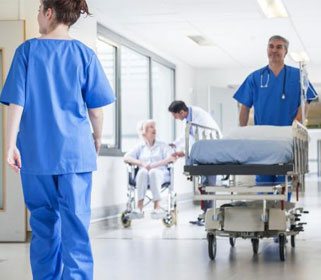Home » Rehabilitation Equipment & Products » Common Questions & Answers About Physical Rehabilitation » Common Questions & Answers About Physical Rehabilitation
Common Questions & Answers About Physical Rehabilitation
What is rehabilitation?
Rehabilitation medicine is the treatment of disorders that have caused either temporary or permanent disability. Rehabilitation usually involves the neurological, muscuoskelatal, cardiovascular and pulmonary systems with the goal being restoring function of the affected physical systems.
Who may need rehabilitation?
People recommended for rehabilitation treatment include all ages, all socioeconomic strata and all races and ethnic groups. Physical rehabilitation is effective for:
- Spinal cord injury victims
- Professional athletes
- Weekend warrior (occasional athletes)
- Employees with work-related injuries
- Infants with birth defects
- Arthritis patients
- Auto-accident victims
- Osteoporosis patients
- Amputees
- Incontinence patients
- Stroke victims
- Cancer survivors
- Scoliosis patients
- Drug overdose survivors
- Elderly adults with a broken hip
- Agricultural accident victims
- Multiple Sclerosis patients
- ALS patients
- Patients recovering from surgery
- Brain injury patients
- Gun shot victims
- Heart attack patients
- Accidental poisoning victims
- Teens with sprained ankles
- Suffers of chronic back pain
- Cerebral palsy patients
- Workers with carpel tunnel syndrome
Why is rehabilitation important?
Costs for on-the-job muscuoskelatal injuries continue to rise, despite improving safety statistics. The average cost for an injury claim has surpassed $25,000 while a few claims cost 10-100 times the average. Companies look to rehabilitation team experts for cost-effect methods of returning good workers back to productive jobs.
Rehabilitation professionals take a moderately-to-severely impaired patient and through specific therapies, return the individual to the highest level of function and independence. Many individuals return to lives that are essentially unchanged from before the injury or disorder. Some patients, although they never return to pre-injury or pre-disease/disorder status, are able to live independently, hold down responsible jobs and have an excellent quality of life. Without rehabilitation, these individuals would need to be cared for the rest of their lives. The cost of rehabilitation is small compared to the costs of lifelong care.
More than two million people in the
With as many as 8.9 Americans have a history of cancer, 2 million brain injuries, 15,000 spinal cord injuries, 4 million on-the-job injuries and 100,000 automobile injuries annually, rehabilitation will become even more important.
Who directs or coordinates rehabilitation?
An interdisciplinary rehabilitation team usually has the responsibility of assessing the injury or disorder, designing a rehabilitation plan and working one-on-one with each patient. The rehabilitation team may consist of a physician specializing in physical medicine and rehabilitation (a physiatrist), a chiropractor, rehabilitation nurses, a physical therapist, a massage therapist, an occupational therapist, a vocational rehabilitation therapist and a speech pathologist. The rehabilitation team members work with patients until maximum function is attained. They may also periodically evaluate patients after rehabilitation is complete and recommend additional therapy.
How does the rehabilitation process work?
Rehabilitation methods differ widely with the specific injury or disorder. Rehabilitation may require prescription medications, specially prescribed mobility equipment, such as wheelchairs or walkers, leg braces or even a prosthetic limb. Rehabilitation may also require techniques including massage, heat or cold therapy, biofeedback, electrotherapy, traction and rehabilitation exercises.
For spinal cord injury, head trauma and stroke, patients may also need mental as well as physical rehabilitation. Psychological, neurological, social and behavioral therapy may be added to the regimen of rehabilitation.
Is rehabilitation merely exercises?
Rehabilitation is a multi-pronged approach to guiding patients to as high a functioning as possible. Physical exercise is only one part of a rehabilitation treatment plan.













